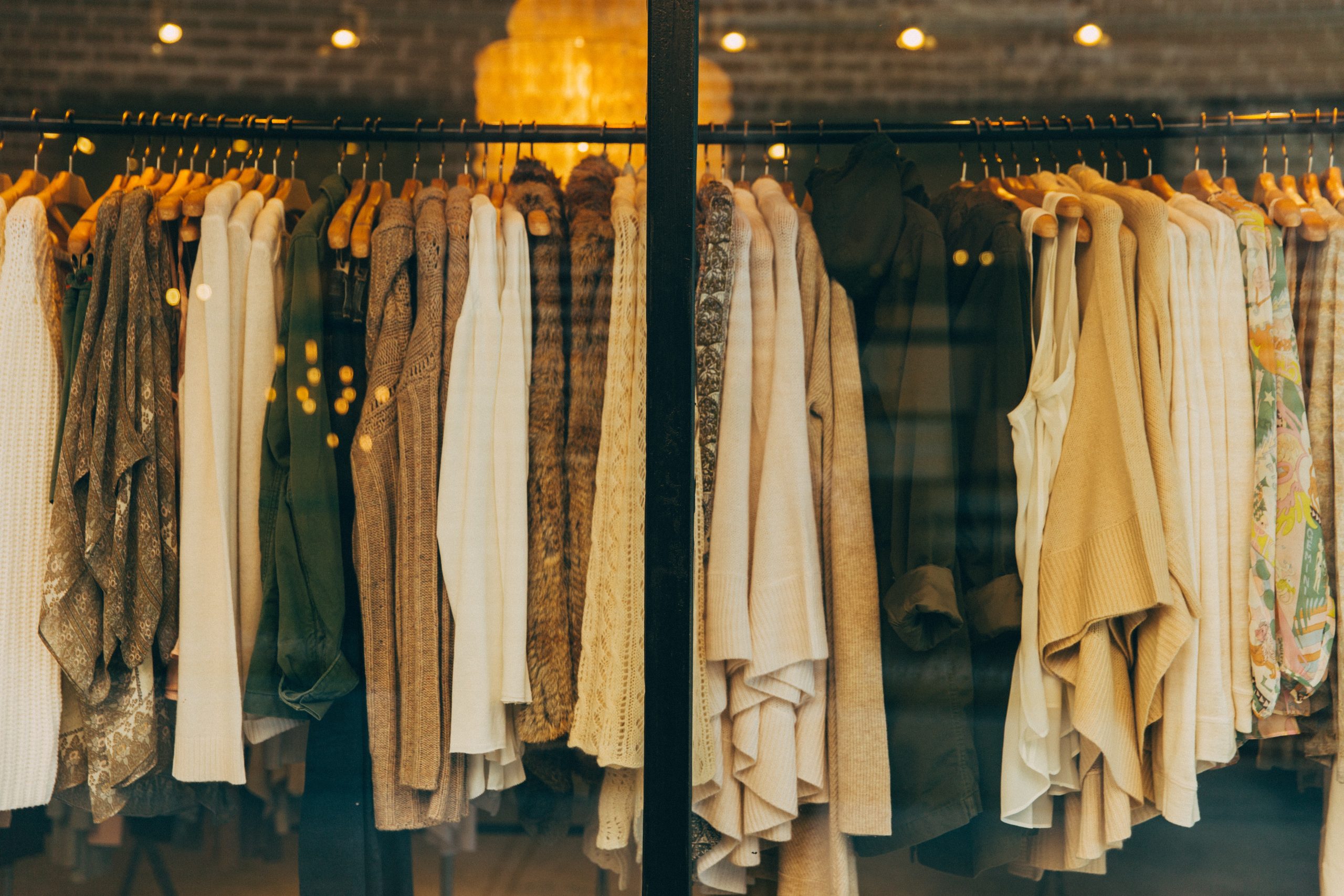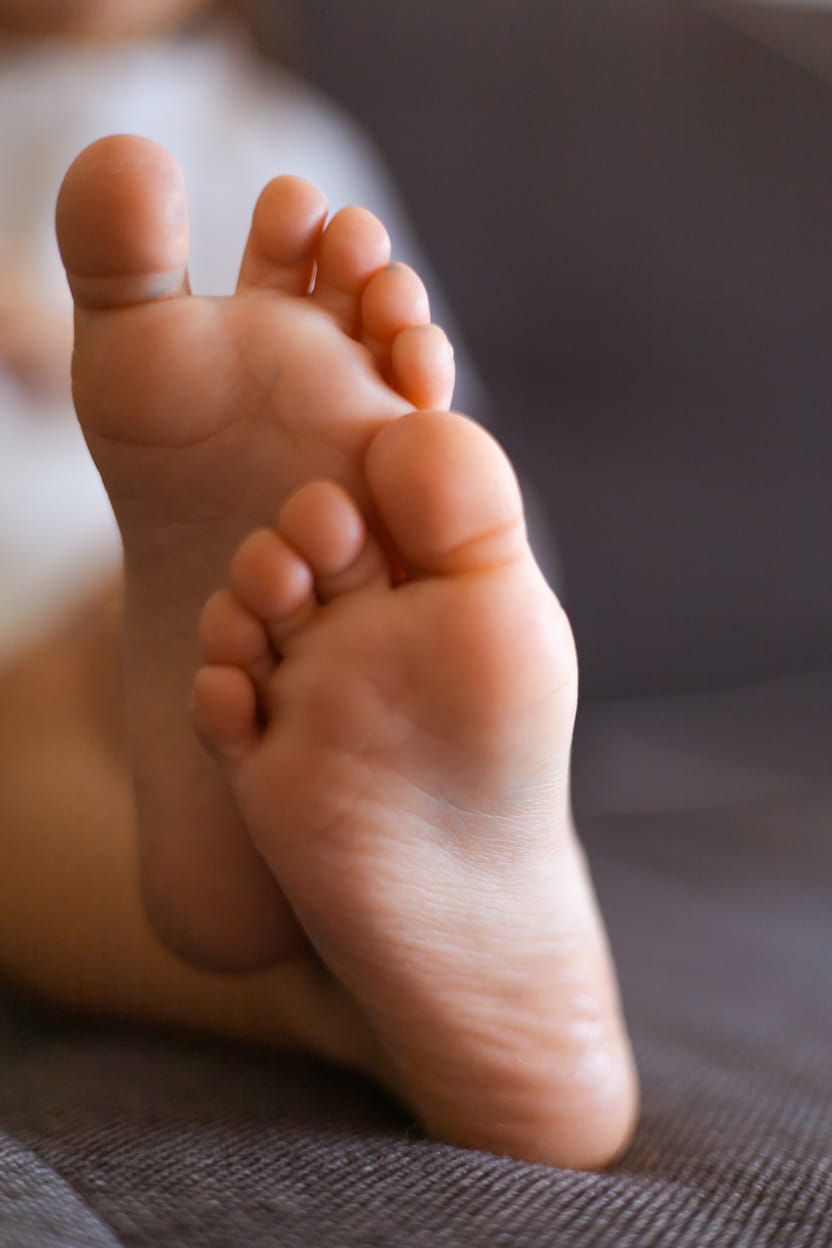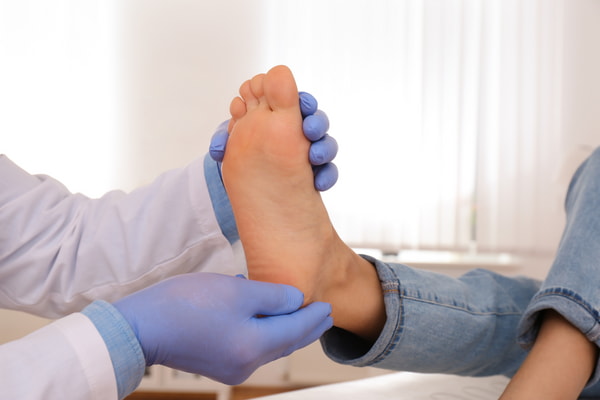Fast fashion has become a popular trend in recent years, with retailers churning out new clothing styles at an alarming rate. While fast fashion may seem like a convenient and affordable option for keeping up with the latest trends, it has devastating consequences for the environment.
Here are some reasons why fast fashion is harmful for the environment:
- Production of cheap and disposable clothing: Fast fashion retailers produce large quantities of cheap, disposable clothing made from low-quality materials. This leads to a massive amount of textile waste that ends up in landfills, taking hundreds of years to decompose.
- Overconsumption and waste: The fast fashion industry encourages overconsumption and a throwaway culture, leading to more waste and environmental degradation. With trends changing so rapidly, consumers are constantly buying and disposing of clothing, contributing to the growing environmental crisis.
- Pollution from textile production: Textile production is a highly polluting industry, with the production of synthetic fabrics emitting harmful chemicals and releasing greenhouse gases. The use of pesticides in cotton farming also contributes to environmental pollution.
- Exploitation of labor: Fast fashion retailers often rely on cheap labor in developing countries, leading to poor working conditions, low wages, and exploitation of workers. This leads to a human rights issue and perpetuates a cycle of poverty.
To combat the harmful effects of fast fashion, it is important to reduce overconsumption and waste by purchasing high-quality clothing made from sustainable materials. Consumers can also support ethical fashion brands that prioritize fair labor practices and environmentally responsible production methods. The fast fashion industry has severe environmental consequences, and it is up to consumers to make conscious choices and support sustainable fashion alternatives.
For centuries, humans have been walking and running barefoot. It's how we evolved to move, and our feet are designed to perform in this way. However, with the advent of modern footwear, we have strayed away from our natural state, and it's had a significant impact on our feet and overall health.
Enter barefoot shoes. These shoes aim to mimic the feeling of walking barefoot while still providing some protection for the feet. They are designed to be flexible, lightweight, and have minimal cushioning to allow for the most natural foot movement possible.
But what makes barefoot shoes so unique? Let's take a look.

Improved Foot Health
One of the most significant benefits of wearing barefoot shoes is improved foot health. Traditional shoes often have rigid soles and elevated heels that change the way our feet interact with the ground. This can cause muscle imbalances, weaken the arches of our feet, and lead to issues like plantar fasciitis and bunions.
Barefoot shoes, on the other hand, encourage proper foot alignment and allow our feet to move in a more natural way. This can strengthen the muscles in our feet and lower legs and improve our overall foot health.
Better Balance and Stability
Barefoot shoes can also improve our balance and stability. When we walk or run barefoot, our feet have to work harder to stabilize our bodies. This strengthens the muscles in our feet and lower legs, which can improve our balance and reduce the risk of falls and other injuries.
Improved Proprioception
Proprioception is the ability to sense where our bodies are in space. When we wear traditional shoes, our feet are somewhat isolated from the ground, which can diminish our proprioceptive ability. Barefoot shoes, however, allow us to feel the ground beneath our feet and provide more feedback to our brains. This can improve our balance, coordination, and overall body awareness.
Better Running Form
Finally, barefoot shoes can help us run with better form. When we run in traditional shoes, we often land on our heels, which can cause a jarring impact with each stride. Barefoot shoes encourage a forefoot or midfoot strike, which can reduce the impact on our joints and improve our running efficiency.
Conclusion
Barefoot shoes are not just a trendy new shoe option. They offer significant benefits to our overall foot health and can help us move and perform better. If you're interested in trying barefoot shoes, start slowly and gradually increase the amount of time you wear them. It may take some time for your feet to adjust, but the benefits are well worth the effort.
Calzados Descalzos: ¿El Futuro del Calzado?
Durante siglos, los humanos han caminado y corrido descalzos. Es cómo evolucionamos para movernos y nuestros pies están diseñados para funcionar de esta manera. Sin embargo, con la llegada del calzado moderno, nos hemos alejado de nuestro estado natural y esto ha tenido un impacto significativo en nuestros pies y en nuestra salud en general.
Entren en juego los zapatos descalzos. Estos zapatos buscan imitar la sensación de caminar descalzos mientras brindan cierta protección para los pies. Están diseñados para ser flexibles, livianos y tener una amortiguación mínima para permitir el movimiento más natural posible del pie.
Pero, ¿qué hace que los zapatos desnudos sean tan únicos? Echemos un vistazo.

Mejora la Salud del Pie
Uno de los beneficios más significativos de usar zapatos descalzos es la mejora de la salud del pie. Los zapatos tradicionales a menudo tienen suelas rígidas y talones elevados que cambian la forma en que nuestros pies interactúan con el suelo. Esto puede causar desequilibrios musculares, debilitar los arcos de nuestros pies y conducir a problemas como la fascitis plantar y los juanetes.
Los zapatos descalzos, por otro lado, fomentan la alineación adecuada del pie y permiten que nuestros pies se muevan de manera más natural. Esto puede fortalecer los músculos de nuestros pies y piernas inferiores y mejorar nuestra salud general del pie.
Mejor Equilibrio y Estabilidad
Los zapatos descalzos también pueden mejorar nuestro equilibrio y estabilidad. Cuando caminamos o corremos descalzos, nuestros pies tienen que trabajar más para estabilizar nuestros cuerpos. Esto fortalece los músculos de nuestros pies y piernas inferiores, lo que puede mejorar nuestro equilibrio y reducir el riesgo de caídas y otras lesiones.
Mejora de La Propiocepcion
La propiocepción es la capacidad de sentir dónde están nuestros cuerpos en el espacio. Cuando usamos zapatos tradicionales, nuestros pies están algo aislados del suelo, lo que puede disminuir nuestra capacidad propioceptiva. Los zapatos desnudos, sin embargo, nos permiten sentir el suelo debajo de nuestros pies y proporcionar más retroalimentación a nuestros cerebros. Esto puede mejorar nuestro equilibrio, coordinación y conciencia corporal en general.
Mejor Forma de Correr
Finalmente, los zapatos descalzos pueden ayudarnos a correr con mejor forma. Cuando corremos con zapatos tradicionales, a menudo aterrizamos en nuestros talones, lo que puede causar un impacto violento con cada zancada. Los zapatos descalzos fomentan una zancada en la parte media o delantera del pie, lo que puede reducir el impacto en nuestras articulaciones y mejorar nuestra eficiencia de carrera.
Conclusion
Los zapatos descalzos no son solo una nueva opción de calzado de moda. Ofrecen beneficios significativos para nuestra salud general del pie y pueden ayudarnos a movernos y rendir mejor. Si estás interesado en probar los zapatos descalzos, comienza lentamente y aumenta gradualmente la cantidad de tiempo que los usas. Es posible que sus pies tarden un tiempo en adaptarse, pero los beneficios bien valen el esfuerzo.
Un estudio muestra un aumento del pie plano en los niños que usan zapatos que en los que no.
Study shows increase of flat foot in children that wear shoes than those who don’t.
Calzados Descalzos y Juanetes
Si estás sufriendo de juanetes, usar calzados descalzos puede ser la respuesta a tus problemas de pies. Los juanetes son una afección común y dolorosa en la que la articulación del dedo gordo se hincha y desalineada.
Usar zapatos con demasiado acolchado puede empeorar este problema, así como los 'high heels' o los calzados ajustados. Por eso, muchas personas con juanetes optan por los calzados descalzos, que ofrecen un montón de espacio para que los dedos se muevan naturalmente, mientras que todavía proporcionan una adecuada protección contra superficies duras como el pavimento y el hormigón.
Los calzados descalzos ofrecen una serie de beneficios cuando se trata de controlar los juanetes. En primer lugar, ayudan a promover el movimiento natural del pie al permitir que los dedos se extiendan sin restricciones, lo que reduce la presión en la zona del juanete y proporciona alivio del dolor asociado con la condición. Además, ya que la mayoría de los calzados descalzos no tienen soporte para la arco, no interfieren con ninguna ortopedia que pueda necesitar usar. Finalmente, este tipo de calzado suele ser bastante ligero, por lo que no coloca una carga extra en las articulaciones ya dolorosas de sus pies causadas por los juanetes.
En pocas palabras, si tienes juanetes, entonces invertir en unos calzados descalzos de buena calidad podría marcar la diferencia cuando se trata de controlar el nivel de dolor durante el día. Estos tipos de zapatos no solo ofrecen una superior comodidad, sino que también fomentan los movimientos saludables de los pies que ayudarán a mantener esos molestos problemas de los juanetes a lejos.
Barefoot Shoes and Bunions
If you’re suffering from bunions, wearing barefoot shoes may be the answer to your foot woes. Bunions are a common and painful condition in which the big toe joint becomes swollen and misaligned.
Wearing shoes that have too much cushioning can make this problem worse, as can high heels or tight-fitting footwear. That's why many people with bunions opt for barefoot shoes—they offer plenty of room for your toes to move naturally while still providing adequate protection against hard surfaces like pavement and concrete.
Barefoot shoes provide a number of benefits when it comes to managing bunions. First, they help promote natural foot movement by allowing your toes to spread out without restriction—this helps reduce pressure on the bunion area and provides relief from pain associated with the condition. Additionally, because there’s no arch support built into most barefoot shoes, they won't interfere with any orthotics you may need to wear. Finally, these types of footwear tend not to be very heavy so they won't place extra strain on already sore joints in your feet caused by bunions either.
In short, if you have bunions then investing in some quality barefoot shoes could make all difference when it comes to managing pain levels throughout the day. Not only do these types of shoe provide superior comfort but also encourage healthy foot movements that will help keep those pesky bunion problems at bay!
Zapatos descalzos minimalistas (barefoot shoes) y salud de los pies: un estudio de la rigidez del arco
El pie humano es una estructura notable y compleja que ha evolucionado durante miles de años para brindar estabilidad, equilibrio y movilidad. En los últimos años, la creciente tendencia de los zapatos descalzos ha dado lugar a un creciente cuerpo de investigación sobre las ventajas y desventajas de este tipo de calzado. Este artículo resume un estudio reciente que investigó los efectos del calzado moderno y el calzado minimalista en la biomecánica del pie humano. El estudio, que comparó la rigidez del arco de las personas que habitualmente usan calzado mínimo con aquellos que habitualmente usan zapatos modernos convencionales, encontró que las personas que usan calzado mínimo tienen arcos más rígidos tanto estática como dinámicamente. Los investigadores plantearon la hipótesis de que los zapatos modernos reducen el papel de los músculos del pie en el mantenimiento de la rigidez del arco, lo que puede provocar el colapso del arco y el pie plano en algunas personas. Por el contrario, los músculos del pie relativamente pequeños en personas con calzado convencional podrían estar relacionados con las características de sus zapatos que inmovilizan y protegen el pie, como puntera restrictiva y soportes elevados para el arco. Si bien estos hallazgos son intrigantes, los investigadores advierten que se necesita más investigación para confirmar la causalidad entre el calzado y la biomecánica del pie. La investigación futura debería centrarse en otros músculos del pie que se cree que están involucrados en el mantenimiento de la rigidez del arco, controlar los posibles factores de confusión, como la ascendencia genética y los niveles de actividad física, y determinar los efectos de las características específicas de los zapatos modernos en la biomecánica del pie. Además, se necesita más trabajo para determinar cómo el uso de zapatos modernos afecta la función del pie en diferentes etapas de desarrollo. A pesar de las limitaciones del estudio, los hallazgos respaldan la idea de que el pie humano no está completamente adaptado para los zapatos "convencionales" modernos y que el calzado descalzo o minimalista puede ser más beneficioso para la salud del pie. Si bien el uso de zapatos modernos en una etapa temprana de la vida puede aumentar el riesgo de pie plano, el uso de calzado mínimo más adelante en la vida puede ayudar a tratar los síntomas del pie plano al fortalecer los músculos del pie. En conclusión, el estudio proporciona más evidencia de la importancia de la biomecánica del pie y el impacto del calzado en la salud del pie. Si bien se necesita más investigación para comprender completamente la relación entre el calzado y la biomecánica del pie, los hallazgos de este estudio sugieren que el calzado descalzo o minimalista puede ser una opción más saludable para mantener la salud del pie y prevenir problemas en los pies. Citations: Holowka, N.B., Wallace, I.J. & Lieberman, D.E. Foot strength and stiffness are related to footwear use in a comparison of minimally- vs. conventionally-shod populations. Sci Rep 8, 3679 (2018). https://doi.org/10.1038/s41598-018-21916-7[vc_row][vc_column][vc_column_text]
Barefoot Shoes and Foot Health: A Study of Arch Stiffness
The human foot is a remarkable and complex structure that has evolved over thousands of years to provide stability, balance, and mobility. In recent years, the growing trend of barefoot shoes has led to a growing body of research into the benefits and drawbacks of this type of footwear. This article summarizes a recent study that investigated the effects of modern shoes and minimal footwear on the biomechanics of the human foot.
The study, which compared the arch stiffness of individuals who habitually wear minimal footwear to those who habitually wear conventional modern shoes, found that individuals who wear minimal footwear have stiffer arches both statically and dynamically. The researchers hypothesized that modern shoes reduce the role of foot muscles in maintaining arch stiffness, which can lead to arch collapse and flat foot in some individuals. In contrast, the relatively small foot muscles in conventionally-shod individuals could be related to features in their shoes that immobilize and protect the foot, such as restrictive toe boxes and raised arch supports.
While these findings are intriguing, the researchers caution that more research is needed to confirm the causality between footwear and foot biomechanics. Future research should target other foot muscles thought to be involved in maintaining arch stiffness, control for potential confounding factors such as genetic ancestry and physical activity levels, and determine the effects of specific features of modern shoes on foot biomechanics. Additionally, further work is needed to determine how the use of modern shoes affects foot function at different stages of development.
Despite the limitations of the study, the findings support the idea that the human foot is not entirely adapted for modern "conventional" shoes and that barefoot or minimal footwear may be more beneficial for foot health. While the use of modern shoes early in life may increase the risk of flat foot, the use of minimal footwear later in life may help treat the symptoms of flat foot by strengthening the foot muscles.
In conclusion, the study provides further evidence of the importance of foot biomechanics and the impact of footwear on foot health. While more research is needed to fully understand the relationship between footwear and foot biomechanics, the findings of this study suggest that barefoot or minimal footwear may be a healthier option for maintaining foot health and preventing foot problems.
Citations:
Holowka, N.B., Wallace, I.J. & Lieberman, D.E. Foot strength and stiffness are related to footwear use in a comparison of minimally- vs. conventionally-shod populations. Sci Rep 8, 3679 (2018). https://doi.org/10.1038/s41598-018-21916-7
[/vc_column_text][/vc_column][/vc_row]
ORNARE CUSRA TRISTIQUE ELIT.
Maecenas ligula sapien non, euismod and tindun , leo. Curatur malesuada posuere imper. Praesent congue odio sit amet eros. Proin magna. Duis vel nibh at velit scele risque suscipit. Curabitur turpis. Vestibulum suscipit nulla quis orci. Fusce ac felis sit amet ligula pharetra condimentum. Maecenas egestas arcu quis ligula mattis placerat. Duis lobortis massa imperdiet quam. Suspendisse potenti.
Pellentesque commodo eros a enim. Vestibulum turpis sem, aliquet eget, lobortis pellentesque, rutrum eu, nisl. Sed libero. Aliquam erat volutpat. Etiam vitae tortor. Morbi vestibulum volutpat enim. Aliquam eu nunc. Nunc sed turpis. Sed mollis, eros et ultrices tempus, mauris ipsum aliquam libero, non adipiscing dolor urna a orci. Nulla porta dolor. Class aptent taciti sociosqu ad litora torquent per conubia nostra, per inceptos hymenaeos.
Pellentesque dapibus hendrerit tortor. Praesent egestas tristique nibh. Sed a libero. Cras varius. Donec vitae orci sed dolor rutrum auctor. Fusce egestas elit eget lorem. Suspendisse nisl elit, rhoncus eget, elementum ac, condimentum eget, diam. Nam at tortor in tellus interdum sagittis. Aliquam lobortis. Donec orci lectus, aliquam ut, faucibus non, euismod id, nulla. Curabitur blandit mollis lacus. Nam adipiscing. Vestibulum eu odio.
Vivamus laoreet. Nullam tincidunt adipiscing enim. Phasellus tempus. Proin viverra, ligula sit amet ultrices semper, ligula arcu tristique sapien, a accumsan nisi mauris ac eros. Fusce neque. Suspendisse faucibus, nunc et pellentesque egestas, lacus ante convallis tellus, vitae iaculis lacus elit id tortor. Vivamus aliquet elit ac nisl. Fusce fermentum odio nec arcu. Vivamus euismod mauris. In ut quam vitae odio lacinia tincidunt. Praesent ut ligula non mi varius sagittis. Cras sagittis. Praesent ac sem eget est egestas volutpat. Vivamus consectetuer hendrerit lacus. Cras non dolor. Vivamus in erat ut urna cursus vestibulum. Fusce commodo aliquam arcu. Nam commodo suscipit quam. Quisque id odio. Praesent venenatis metus at tortor pulvinar varius.





